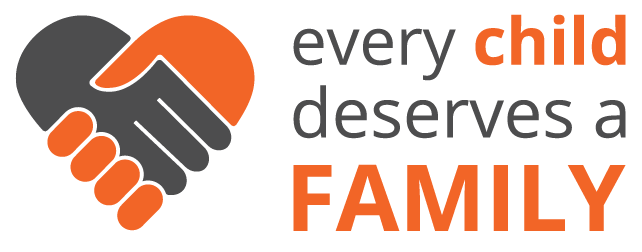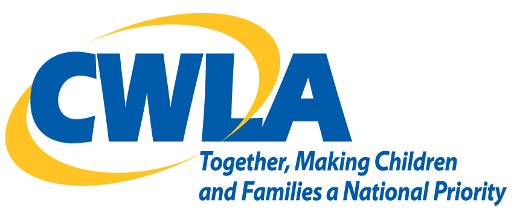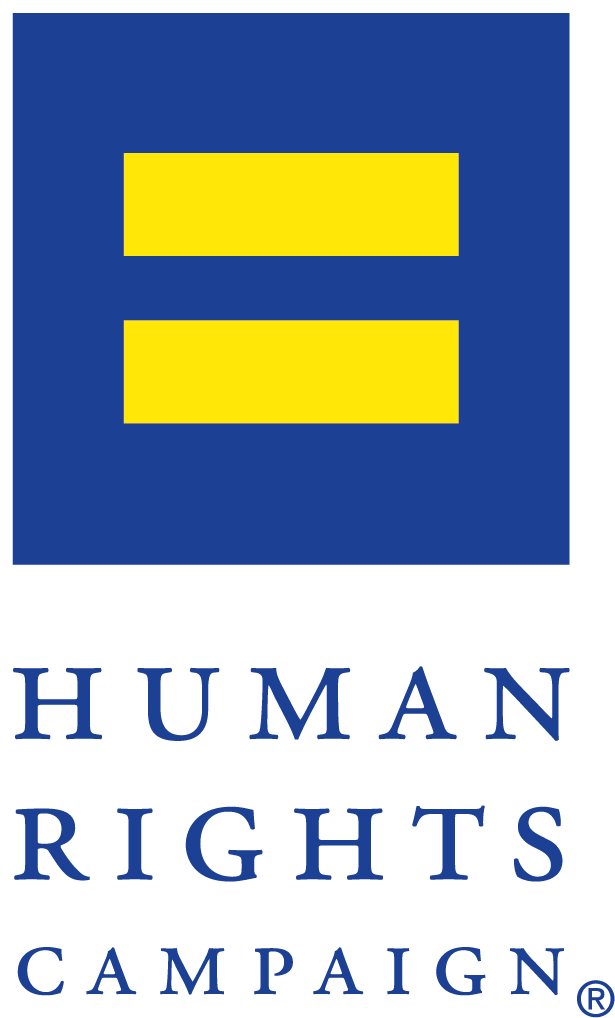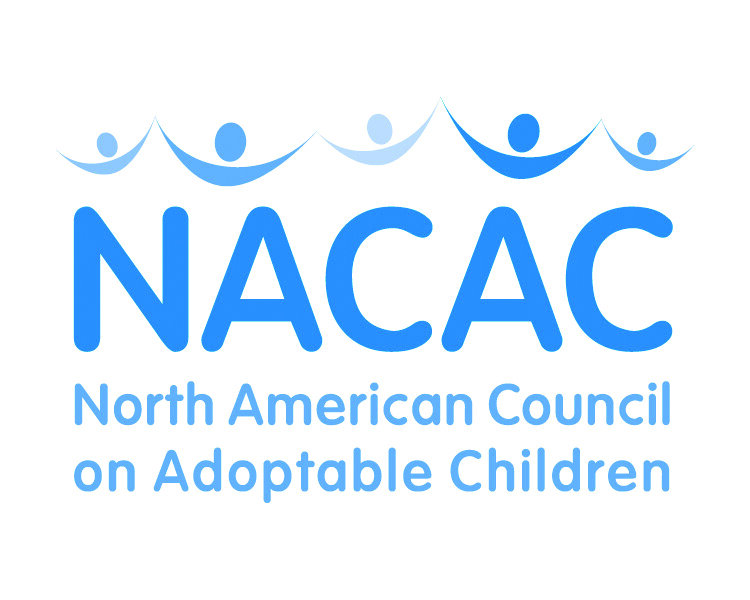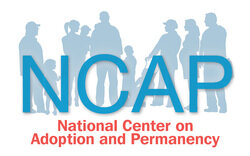Recommendations
for the US Department of health and human services (HHS)
FOR Achieving Equity for LGBTQI+2S People and Other Marginalized Groups in Child Welfare
See the July 2021 Comment Letter on Achieving Equity for LGBTQI+2S People and Other Marginalized Groups in Child Welfare
The Need
Discrimination is widespread and entrenched in the child welfare system, impacting children, families of origin, kin, and prospective foster and adoptive parents who are lesbian, gay, bisexual, transgender, questioning, intersex, and Two Spirit (LGBTQI+2S) and gender nonconforming, who are Black, Indigenous, and other people of color, who live with disabilities, who are religious minorities or secular, who are immigrants or language minorities and those at intersectional identities. Addressing systemic racism, discrimination and disproportionality in the child welfare system is essential for improving outcomes for and the well-being, health, and safety of children and their families.
The priority in child welfare should be providing the supports necessary to keep children with their families of origin, including measures to eliminate disproportionality in removals–including for LGBTQI+2S parents—and measures to address family conflict and safety related to a child’s sexual orientation and gender identity or expression, and sex characteristics. When children cannot remain with their families of origin, the priority should be for children to be placed in settings that affirm and reflect their complex social identities, including race, tribal affiliation, religion, and sexual orientation and gender identity or expression, and sex characteristics. All placements must be affirming for children of all genders, sexual orientations, and gender identity and expression, and sex characterics, as children and youth may be questioning and developing these identities over the course of their lifespan.
For too long, there have been far too few supports for families of origin and relatives. This failure, and the lack of affirming placements, has led to horrific levels of placement instability, poor outcomes and dramatic overrepresentation in care of LGBTQI+2S children; those who are Black, Indigenous, and other children of color; children from low-income families; and, particularly, those with intersectional identities. It is impossible to imagine achieving major improvements in system-involved children’s and families’ well-being without addressing these failings.
In particular:
Research has shown that LGBTQ+ and Two Spirit (LGBTQ+2S) children and children who are gender nonconforming in foster care (an estimated 30-34 percent of foster youth)[1] experience twice the rate of mistreatment in care as their non-LGBTQ+2S counterparts, and worse outcomes related to placement instability (longer stays in congregate care and multiple placements, and lack of placements affirming of the child’s identity); homelessness; hospitalization for emotional reasons; criminal justice involvement; and being trafficked. LGBTQ+2S youth of color report higher rates of placement instability and poor outcomes than their white counterparts.[2]
Approximately 28 percent of homeless youth with histories of time in foster care identified as LGBTQ+2S and were significantly more likely to experience 7 of 8 adverse events compared to their peers with no foster care history.[3] In addition, LGBTQ+2S youth in foster care had nearly 3 times greater odds of reporting a past-year suicide attempt compared to LGBTQ+2S youth who were never in foster care (35% versus 13%); these numbers are even higher for LGBTQ+2S foster youth of color (38%) and highest for transgender and non-binary foster youth (45%). [4]
LGBTQ+2S youth who had been in foster care had over 3 times greater odds of being kicked out, abandoned, or running away due to treatment based on their LGBTQ+2S identity compared to those who were never in foster care (27% versus 8%); these numbers were higher for LGBTQ+2S foster youth of color (30%) and highest for transgender and non-binary foster youth (40%). [5]
Numerous studies document the shortage of qualified and available homes for the over 400,000 youth in the child welfare system and many youth subsequently live in residential facilities rather than in family-like settings and age out of care without a permanent family.[6] Although same-sex couples are seven times more likely to foster or adopt than their different-sex counterparts,[7] and are likely to foster and adopt special populations including children with disabilities and children with behavioral health needs, many child-placing agencies refuse to serve same-sex couples and LGBTQ+2S prospective parents. This, as well as refusals to serve single, religious minority, and secular parents has resulted in a reduction of the pool of qualified and available homes for youth in the child welfare system who need placement on a temporary or permanent basis. As news spreads about discrimination in child welfare, it serves to deter or delay prospective foster parents in other service areas who fear discrimination and are thus hesitant to apply.[8] It also sends a negative message about LGBTQ+2S people to children and youth in the child welfare system about the agency’s values and who they consider “worthy”, including who is, and who is not, considered fit to be a parent. Such discriminatory messages by child-serving agencies carry negative consequences for the social, behavioral, and mental health of LGBTQ+2S children they serve.[9] Such discriminatory messages also place LGBTQI+2S parents at greater risk of involvement with the child welfare system, especially those who are Black, Indigenous or other people of color or low-income, whose families and children are already vastly overrepresented in state child welfare systems. The priority in child welfare should be on providing the supports necessary to keep children with their families of origin. When removal is required, barring discrimination in foster care and adoption will increase the number of homes available to foster children waiting for foster and adoptive families, while reducing the negative messages about LGBTQ+2S people sent to children, families, and prospective foster parents in the system.
Racial disparities exist at every stage of child welfare decision-making. Black families are more likely to be reported to the child abuse hotline and investigated for child abuse and neglect; more likely to have cases against them substantiated and to have their children removed from their care, and are subjected to termination of parental rights at higher rates than White parents. Once in foster care, Black children generally receive inferior services and are kept out of their homes for longer periods of time than their white counterparts.[10] Thirty-three percent of children in foster care are Black, but they make up only 15 percent of the child population, despite the fact that federal studies indicate that child abuse and neglect is lower for Black families than it is for whites.[11] Similarly, where abuse has been reported American Indian/Alaska Native children are two times more likely to be investigated, two times more likely to have allegations of abuse or neglect substantiated, and four times more likely to be placed in foster care than White children. This disproportionality has increased annually since 2010.[12]
Parents with disabilities and their families are overrepresented in the child welfare system. While parents with disabilities make up only 6.2 percent of all parents in the United States, a recent study found that 19 percent of children in foster care have a parent with a disability[13]. Individuals with disabilities who are seeking to foster or adopt a child also encounter significant barriers.
Black lesbian and bisexual mothers are four times more likely to have lost their children to the state in child welfare proceedings than their non-LGB counterparts.[14]
Eleven states have passed foster care and adoption license to discriminate laws or policies allowing agencies to turn away prospective LGBTQ+2S foster and adoptive parents (as well as single, religious minority, and secular parents), decreasing the number of urgently needed foster homes, as well as decreasing the number of affirming placements for LGBTQ+2S and religious minority foster children. Several of these laws may also allow discrimination against and service denials to LGBTQ+2S youth.[15]
Data collection on LGBTQI+2S and tribal youth and families in the system is lacking for states, tribes, and territories to determine baseline data and outcomes from these groups who are dramatically overrepresented in care and suffer worse outcomes. Such data collection is urgently needed to track progress for improving outcomes locally and nationally, and for accountability in serving the needs of all youth and families, including those living at intersectional identities.
Needed Components
Necessary components for addressing the needs outlined above include:
Providing and enforcing nondiscrimination protections for and resources, as detailed below, to increase affirming and supportive services and placements for LGBTQI+2S children, parents, and families and those at the intersections of race, ethnicity, sex, religion, age, gender and gender identity and expression, sexual orientation, marital status or partnership, disability, citizenship or immigration status, national origin, tribal affiliation, and language, in Child Abuse Prevention and Treatment Act, and Social Security Title IV-B and IV-E funded services.
Combatting discrimination in child welfare against parents and relatives in families of origin, including against LGBTQI+2S and gender nonconforming parents and relatives; Black, Indigenous, and other parents and relatives of color; low-income parents and relatives; parents and relatives with disabilities; and those with intersectional identities.
Combatting discrimination and improving care, services, and outcomes for the 30-34% of young people in foster care who identify as LGBTQ+2S or are gender nonconforming; for Black, Indigenous and other children of color; children with disabilities; and those with intersectional identities.
Combatting discrimination against current and prospective LGBTQI+2S and gender nonconforming foster and adoptive parents and kinship care providers, Black, Indigenous, and parents and kin of color, and those with intersectional identities. This will increase affirming temporary and permanent families to foster children and homes that reflect the pool of children in care, including those who identify as LGBTQI+2S or who are gender nonconforming, Black, Indigenous and children of color, and those with intersectional identities. It also could increase needed family placements for children with disabilities and children with behavioral health needs, as research has found that LGBTQ+2S adults “may be more willing [to adopt these children] than heterosexual adults.”[16]
Recommendations
Legislative Recommendations:
1. Pass the Every Child Deserves a Family Act. See this section by section summary.
2. Build on the Family First Prevention Services Act to allow the use of Title IV-E funds more broadly for prevention services that are designed to keep families together, including interventions designed to address family conflict related to sexual orientation and gender identity and expression, and sex characteristics.
3. Pass the Equality Act.
4. Pass the Do No Harm Act.
5. Increase Chafee funding to at least $500 million annually for young people with lived experience in foster care to improve the transition to adulthood. Increase the federal share of Title IV-E funding to 75% for permanency and transition to adulthood services. Increase accountability for youth engagement and leadership in individual decision making in their cases and in service delivery.
6. If possible, carry out regulatory recommendations below through the Congressional Review Act.
Regulatory Recommendations:
Reverse or rescind:
7. 84 FR 63831 - RIN 0991-AC16 , the HHS grants regulation repromulgating Grants Regulation 45 CFR 75.300(c) and (d) and eliminating broad nondiscrimination protections in all HHS grants programs including child welfare, if the final rule has been issued (the final rule was not issued as of December 4, 2020);
8. 84 FR 63809, RIN 0991-AC16, the Notice of Nonenforcement ceasing enforcement of 45 CFR 75.101(f), 75.110(a), 75.300(c) and (d), 75.305(a), 75.365, 75.414(c) and (f), and 75.477, and ceasing enforcement of broad nondiscrimination protections in all HHS grants programs including child welfare;
9. The waiver to the Grants Regulation 45 CFR 75.300(c) HHS granted to South Carolina. HHS should also rescind the waiver granted to the Governor of South Carolina on January 23, 2019, granting an exception to faith-based foster care agencies receiving federal funding to the portion of the Grants Regulation 45 CFR 75.300(c) barring discrimination based on religion. While that waiver did not grant an exception to nondiscrimination requirements based on sexual orientation and gender identity (later potentially eliminated under the Grants Regulation above), South Carolina foster care agencies have used it to justify turning away qualified LGBTQ foster parents as well as those who are Jewish, Catholic, secular, and of other faiths than born-again Protestant;
10. 85 FR 28410 - RIN 0970-AC72, the AFCARS final rule effective July 13 2020, eliminating LGBTQ+2S and Indian Child Welfare Act (ICWA) data elements from HHS’ foster care data collection system. Add voluntary gender identity data collection for foster youth and foster and adoptive parents and guardians to the AFCARS final rule effective, incorporating best practices outlined in #17 below.
White House Recommendations:
11. Establish a White House-level staff position to coordinate interagency work impacting the lives of LGBTQI+2S youth and families, and provide White House support for appointees.
12. Issue an all agency memo asking that agency heads prioritize funding recommendations related to LGBTQI+2S children and families for the president’s budget.
HHS Recommendations:
13. See Regulatory Recommendations 10-13 above.
14. Establish a Senior Advisor to the Assistant Secretary of ACF at a GS 15 or higher position to focus on the needs of LGBTQI+2S youth who are in or have been in the child welfare system or Run Away and Homeless Youth Act programs.
15. Stand up a National Resource Center for Safety, Well-being, Placement Stability, and Permanency for LGBTQI+2S Foster Youth at HHS, funded through Title IV-B, with a commensurate increase in appropriations.
16. Create, post, and circulate FAQs, blogs, Dear Colleague letters, and/or guidance explaining sexual orientation and gender identity and expression, and sex characteristics-inclusive nondiscrimination protections for HHS-funded programs including child welfare services and how to submit claims for cases of discrimination based on these characteristics.
Ensure that nonbinary people are explicitly included and provided protections in these materials.
Ensure that this guidance clarifies that families of origin, kin, or foster and adoptive families who affirm their transgender or gender nonconforming children’s identities are not discriminated against in removals, placements and custody proceedings.
Ensure that where sex discrimination is prohibited, that these protections cover discrimination based on sexual orientation and gender identity and sex characteristics (including intersex traits) consistent with the Supreme Court Bostock opinion and per the Biden Executive Order issues January 20, 2021. [17]
17. Ensure affirming and supportive services and placements in child welfare by requiring non-discriminatory and culturally and linguistically sensitive services and staff training for staff in funded programs, respecting the complex social identities of service recipients including their race, ethnicity, sex, religion, creed, color, age, gender, gender identity, gender expression, sexual orientation, marital status or partnership, disability, genetic information, citizenship or immigration status, national origin, tribal affiliation, intersex traits, socioeconomic status, and language, and those with intersectional identities. This could be based on the Runaway and Homeless Youth Act (RHYA) implementing regulations 45 CFR 1351.22.
Ensure these protections and affirming services under 15 and 16 are available for those deemed beneficiaries (youth) and those who are not (families of origin, kin providing or seeking to provide kinship care, and foster and adoptive parents).
Provide initial and ongoing training and coaching to all child welfare personnel on gender identity development, gender inclusive practices, and gender affirming care and services, including that a family of origin’s choice to affirm a child’s gender identity or expression is not abuse or neglect.
Fund and promote education and training for child welfare agencies and personnel on care and medical management of intersex youth, healthy variations in sex development and characteristics, and the benefits of delaying genitourinary and sterilizing surgeries.
18. Require data collection on sexual orientation and gender identity and expression (SOGIE) of foster children, parents, and guardians by: integrating questions about SOGIE and discriminatory experiences into existing demographic data collection, intake, service planning and case review processes; enforcing nondiscrimination protections based on sexual orientation and gender identity and expression within these data collection processes; training child welfare workers to collect this information respectfully and accurately before integrating these questions into current data collection systems; and maintaining confidentiality when recording and sharing this information.[18]
Going forward, HHS should also assess the feasibility of collecting data on variations in intersex characteristics (also known as “intersex status”), in accordance with recommendations from the National Academies of Science, Engineering, and Mathematics. [19]
19. Require full implementation of the Indian Child Welfare Act
Collect data to track this implementation and hold jurisdictions accountable.[20]
20. Utilize Title IV-E funding to provide, and require training of caseworkers, all foster care staff, judges, ad litem attorneys, and others on ensuring service delivery and training which is affirming of the complex social identities of children and families for all groups enumerated in #17 above.
21. Provide technical assistance to states, territories, tribes, and agencies for #17–19 above.
22. Protect the well-being of children by prohibiting any attempt to disparage, “change,” or degrade a young person’s sexual orientation or gender identity or expression as well as prohibiting forcible religious conversion of foster youth.
Require child welfare personnel to intervene to protect children from any attempt to disparage, “change,” or degrade a young person’s sexual orientation or gender identity or expression regardless of the nature of the intervention or the credentials of the person administering it. Workers should be alert to any approach or intervention that treats gender diversity or sexual orientation as a defect, or suggests that a person’s gender identity or sexual orientation can or should be changed. If necessary, agencies should seek a protective order from the juvenile court to stop these practices.
Religious attendance for foster children should be optional; agencies should fund alternative childcare or activities for children while foster parents attend religious services.
23. Conduct a 50-state study on policies, practices, and procedures that deny, delay, or create disparate burdens to an individual’s participation in child welfare programs or services - and on child removal and reunification rates—based on the family’s or child’s sex, sexual orientation, gender identity or expression, and include an examination of the impact of intersectional identities including race, religion, marital status, disability, national origin, or tribal affiliation. Identify baseline data on representation in child welfare and outcomes for LGBTQI+2S foster children, families of origin, foster parents, and kin. Identify research needs and promising practices for improving care to these groups including to address disproportionality in child welfare removals and disproportionality in poorer outcomes while in child welfare custody, such as delays in reunification and other permanency outcomes. The study should identify existing education, training, informed consent, and healthcare decision-making practices with respect to intersex infants and children and transgender adolescents and young adults.
24. In order to support intersex youth in the foster care system, the experiences of intersex people must be included in equity data and research. ACF should expand data collection on intersex youth in foster care by developing, testing, and implementing inclusive data collection measures for sex assigned at birth, gender identity, intersex status, and sexual orientation, building on a forthcoming consensus study from the National Academies of Science, Engineering, and Mathematics'. [21]
ACF should support intersex-inclusive and –focused research, building on the National Institutes of Health’s growing intersex research portfolio. [22]
25. Ensure research into evidence-based practices required for funding under the Title IV-E Prevention Program and other child welfare reform priorities is culturally competent and includes programs that provide services directed at LGBTQI+2S youth and families.
26. Support research on why/how disproportionality occurs in child welfare, funded through Title IV-B.
27. Establish an advisory committee for ACF made up of LGBTQI+2S youth in care, LGBTQI+2S youth who were formerly in care, LGBTQI+2S foster and adoptive parents, and LGBTQI+2S foster parents and relative caregivers. Address the specific needs of trans and gender non-conforming foster youth.
28. Host a biennial convening on the needs of LGBTQI+2S foster youth and families, funded through Title IV-B.
29. Encourage the adoption and implementation of practice models such as the Family Acceptance Project Model, which promotes positive development and healthy futures for LGBTQ+2S youth through counseling sessions with the youth and their families, wellness checks, training, and/or support.
30. Fund demonstration projects for prevention models that deliberately address reasons that LGBTQI+2S children enter care using Title IV-B funding, with a commensurate increase in appropriations.
31. Research and identify effective, problematic, and promising mental health treatment practices in order to: (1) to reduce overuse and unsafe use of psychotropic medications, and (2) develop and support effective treatments to improve outcomes for foster youth. Provide technical assistance to help states implement the “medical home” requirements under Title IV-B planning. Work to eliminate problematic practices regarding “overriding” parental consent for medication of foster youth. Ensure compliance with Title IV-E of the Social Security Act, section 475(1)(C) and (5)(D), which require state child welfare agencies to (1) maintain updated health care information on each child in out-of-home care, including the child's prescription medication history; and (2) provide this information to each foster parent upon placement of the child. Provide technical assistance to states in creating oversight systems to ensure safe use of psychotropic medication, including reviews of prescribing patterns, chart audits, tracking of “red flag” markers for secondary clinical review, and appropriate monitoring for youth prescribed psychotropic medications with known, serious side effects, including regular metabolic screening and monitoring in youth prescribed second-generation antipsychotics.
32. Provide incentive and practice models for recruiting, supporting, and retaining LGBTQ+2S and other underrepresented foster and adoptive families to ensure a pool of foster families that is reflective of the diversity of children in the system using Title IV-B funding, with a commensurate increase in appropriations.
33. Eliminate the Conscience and Religious Freedom Division of the Office of Civil Rights and re-integrate religious discrimination protection enforcement within the Civil Rights Division.
34. To improve child welfare services and protections for LGBTQI+2S children, particularly those who are transgender and gender nonconforming and nonbinary, ensure affirming care by child welfare agencies funded by HHS, and develop promising practices, including through items the steps listed above, by:
Ensuring sibling unification, or regular visitation if siblings prefer to reside separately with kin, absent intra-sibling safety issues.
Working closely with TGNC children who are developmentally able to talk about their needs to identify a placement in which they feel most comfortable to live safely and authentically, and which is most consistent with their gender identity as they currently understand and describe it.
Consulting children on their placement preferences in making placement decisions for single-sex congregate care and other child welfare facilities, and placing them by their gender identity unless they prefer a different placement.
Developing a requirement that LGBTQI+2S children be moved to an affirming placement within a specific, short amount of time if they report that a placement is non-affirming.
Providing comprehensive transition related health care for transgender foster youth, and connecting LGBTQI+2S foster youth with LGBTQI+2S friendly healthcare providers including by requiring child welfare agencies to:
Contract with clinicians that provide gender-related care that follows established standards of care. In particular, the health and behavioral health care providers that they contract must be competent to diagnose and treat gender dysphoria by focusing on alleviating distress and facilitating their gender transition in whatever manner is developmentally appropriate.
Ensure that transgender and gender nonconforming children have access to competent health and behavioral health clinicians who are experienced in providing gender-affirming care, and who work with children and their caregivers to determine the appropriate treatment.
Providing LGBTQI+2S foster youth with affirming sexual health education and PrEP.
Requiring caseworkers of LGBTQI+2S crossover (child welfare / juvenile justice/RHYA) youth to remain involved, particularly with detained youth, and to advocate for appropriate placement and services within the juvenile justice system.
Ensuring sibling unification.
Encouraging states to update their Foster Youth Bill of Rights policies to include sexual orientation, gender identity and expression, and sex characteristics (intersex) protections and affirming services
Ensuring the ability of youth to pursue legal action should a right be violated (this must be addressed by statute, and is included for LGBTQI+2S and religious minority youth in the Every Child Deserves a Family Act - see #1 above).
Taking action to prevent unnecessary and non-consensual genital or sterilizing surgeries of intersex infants and children in foster care and ensure trauma-informed care for foster youth who have been subjected to such procedures and other medical trauma, including developing models to promote family, healthcare provider, and agency education and acceptance for intersex children and to discourage unnecessary early surgeries.
35. Require data collection and the development of outcome measures related to youth engagement in case planning and in court.
36. Act to improve services to older foster youth, among whom LGBTQI+2S and Black, Indigenous and youth of color are overrepresented by:
Establishing a high-profile position within ACF to focus on the needs of older youth who are in or have been in the child welfare system.
Hosting a convening on the needs of older youth, especially those who age out of foster care, with a focus on permanency, connections, education and employment.
Expanding affirming family-based alternatives for teens currently in group homes by providing research for service models, start up funds, financial incentives and family support services. Incorporate youth choice in recognition that some youth currently prefer LGBTQI+2S-affirming congregate care facilities when their other choice is a non-affirming foster family placement.
Mandating the provision of extended foster care through age 21, and allowing greater flexibility on school and work requirements for extended care and to expedite re-entry into care.
37. Support research focused on the experiences of transgender and intersex children and youth in child welfare (including how agencies make medical decisions for them)
These recommendations have been prepared and distributed by The Every Child Deserves a Family Campaign.
Campaign Co-Chairs
Thanks to the following organizations for contributing to these recommendations:
[1] See Laura Baams, Bianca D.M. Wilson & Stephen T. Russell, LGBTQ Youth in Unstable Housing and Foster Care, 143(3): e20174211 Pediatrics (2019), available at: https://pediatrics.aappublications.org/content/pediatrics/early/2019/02/07/peds.2017-4211.full.pdf; Megan Martin, Leann Down, & Rosalynd Erney, Out of the Shadows: Supporting LGBTQ youth in Child Welfare Through Cross-System Collaboration, Center for the Study of Social Policy (2016), available at: https://cssp.org/resource/out-of-the-shadows/. See also, Theo G. M. Sandfort, Experiences and Well-Being of Sexual and Gender Diverse Youth in Foster Care in New York City : Disproportionality and Disparities, Administration for Children’s Services (2020), available at: https://www1.nyc.gov/assets/acs/pdf/about/2020/WellBeingStudyLGBTQ.pdf
[2] Ibid. See also, Bianca D.M. Wilson, Khush Cooper, Angeliki Kastanis & Sheila Nezhad, Sexual and Gender Minority Youth in Foster Care: Assessing Disproportionality and Disparities in Los Angeles, The Williams Institute: UCLA School of Law (2014), available at https://williamsinstitute.law.ucla.edu/wpcontent/uploads/LAFYS_ExecutiveSummary_Aug_2014.pdf. and
Jeffrey M. Poirier, Sandra Wilkie, Kristin Sepulveda, & Tania Uruchima, Jim Casey Youth Opportunities Initiative: Experiences and Outcomes of Youth who are LGBTQ, 96 Child Welfare 1 (2018).
[3] Morton, M.H., Dworsky, A., & Samuels, G.M., Missed opportunities: Youth homelessness in America. National estimates. (2017), available at: https://voicesofyouthcount.org/wp-content/uploads/2017/11/VoYC-National-Estimates-Brief-Chapin-Hall-2017.pdf
[4] National Survey on LGBTQ Youth Mental Health 2020, The Trevor Project (May 2021), available at: https://www.thetrevorproject.org/survey-2020/
[5] Ibid.
[6]See The AFCARS Report, U.S. Department of Health and Human Services, Administration for Children and Families, Administration on Children, Youth and Families Children’s Bureau, (2020) available at: https://www.acf.hhs.gov/sites/default/files/cb/afcarsreport27.pdf
[7] Danielle Taylor, Same-Sex Couples are More Likely to Adopt or Foster Children, United States Census Bureau (2020), https://www.census.gov/library/stories/2020/09/fifteen-percent-of-same-sex-couples-have-children-in-their-household.html (last visited Dec 10, 2020). See also, Shoshana K. Goldberg & Kerith J. Conron, UCLA School of Law, How many same-sex couples in the U.S. are raising children? (July 2018), The Williams Institute, available at: https://williamsinstitute.law.ucla.edu/research/parenting/how-many-same-sex-parents-in-us/.
[8] Brief for Family Equality and PFLAG as Amicus Curiae, Fulton v. City of Philadelphia, U.S. 19-123 (2020) available at: https://www.supremecourt.gov/DocketPDF/19/19-123/150745/20200820123207185_Family%20Equality%20PFLAG%20Amicus%20Brief.pdf
[9] See E.M. Saewcy, C. Konishi, H.A Rose & Y. Homma. School-Based Strategies to Reduce Suicidal Ideation, Suicide Attempts, and Discrimination Among Sexual Minority and Heterosexual Adolescents in Western Canada, 5 Int J Child Youth Family Stud 89,112 (2014); M.L. Hatzenbuehler & K.M. Keyes, Inclusive Anti-Bullying Policies Reduce Suicide Attempts in Lesbian and Gay Youth, 53 Adolesc Health 21, 26 (2013); M.L. Hatzenbuehler, M. Birkett, Van Wagenen A, I.H. Meyer, Protective School Climates and Reduced Risk for Suicide Ideation in Sexual Minority Youth, 104 Am J Pub Health 279, 286 (2014); Mark L. Hatzenbuehler et al, Structural Stigma and Cigarette Smoking in a Prospective Cohort Study of Sexual Minority and Heterosexual Youth, 47 HHS Public Access 48, 56 (2015); Hatzenbuehler et al, State-Level Policies and Psychiatric Morbidity In Lesbian, Gay, and Bisexual Populations, 99 Am J Pub Health 2275, 2281 (2009).
[10] Dorothy Roberts & Lisa Sangoi, Black Families Matter: How the Child Welfare System Punishes Poor Families of Color, The Appeal (2018), available at: https://theappeal.org/black-families-matter-how-the-child-welfare-system-punishes-poor-families-of-color-33ad20e2882e
[11] Disproportionality and Disparity in Child Welfare, National Conference of State Legislatures (2020), available at: https://www.ncsl.org/research/human-services/disproportionality-and-disparity-in-child-welfare.aspx
[12] Disproportionality in Child Welfare Fact Sheet, National Indian Child Welfare Association, available at: https://www.nicwa.org/wp-content/uploads/2019/10/2019-AIAN-Disproportionality-in-Child-Welfare-FINAL.pdf
[13] Elizabeth Lightfoot & Sharyn DeZelar, The Experiences and Outcomes of Children in Foster Care Who Were Removed Because of a Parental Disability, Children and Youth Services Review (2015), available at: https://www.sciencedirect.com/science/article/abs/pii/S0190740915301432
[14] Kathi L.H Harp & Carrie B. Oser, Factors associated with two types of child custody loss among a sample of African American mothers: A novel approach, 60 Social Science Research 283-296 (2016).
[15] See https://everychilddeservesafamily.com/state-resources for links to these laws.
[16] Expanding Resources For Waiting Children II: Eliminating Legal and Practice Barriers to Gay and Lesbian Adoption from Foster Care, Evan B. Donaldson Adoption Institute at 17-20 (Sept. 2008) (the “Donaldson Report”), available at: https://docplayer.net/63117222-Policy-practice-perspective.html. See also, Adoption by Lesbians and Gays:A National Survey of Adoption Agency Policies, Practices, and Attitude, Evan B. Donaldson Adoption Institute (2003) available at: https://lgbtqpn.ca/library/adoption-by-lesbians-and-gays-a-national-survey-of-adoption-agency-policies-practices-and-attitudes/
[17] Exec. Order No. 13,988, 86 Fed. Reg. 7023 (Jan. 20, 2021)
[18] Note that this can be achieved through Recommendation 10 above.
[19] National Academies of Sciences, Engineering, and Medicine 2020. Understanding the Well-Being of LGBTQI+ Populations. Washington, DC: The National Academies Press.
[20] Ibid.
[21] National Academies of Sciences, Engineering, and Medicine, Measuring Sex, Gender Identity, and Sexual Orientation for the National Institutes of Health, available at: https://www.nationalacademies.org/our-work/measuring-sexgender-identity-and-sexual-orientation-forthe-national-institutes-of-health (accessed May 24, 2021).
[22] National Institutes of Health, DSD & Intersex Research Portfolio (2020), available at: https://dpcpsi.nih.gov/sites/default/files/SGMRO_SnapshotDSD-Intersex_508.pdf (describing 34 projects comprising 8.9% of NIH’s SGM portfolio for FY 2018).
